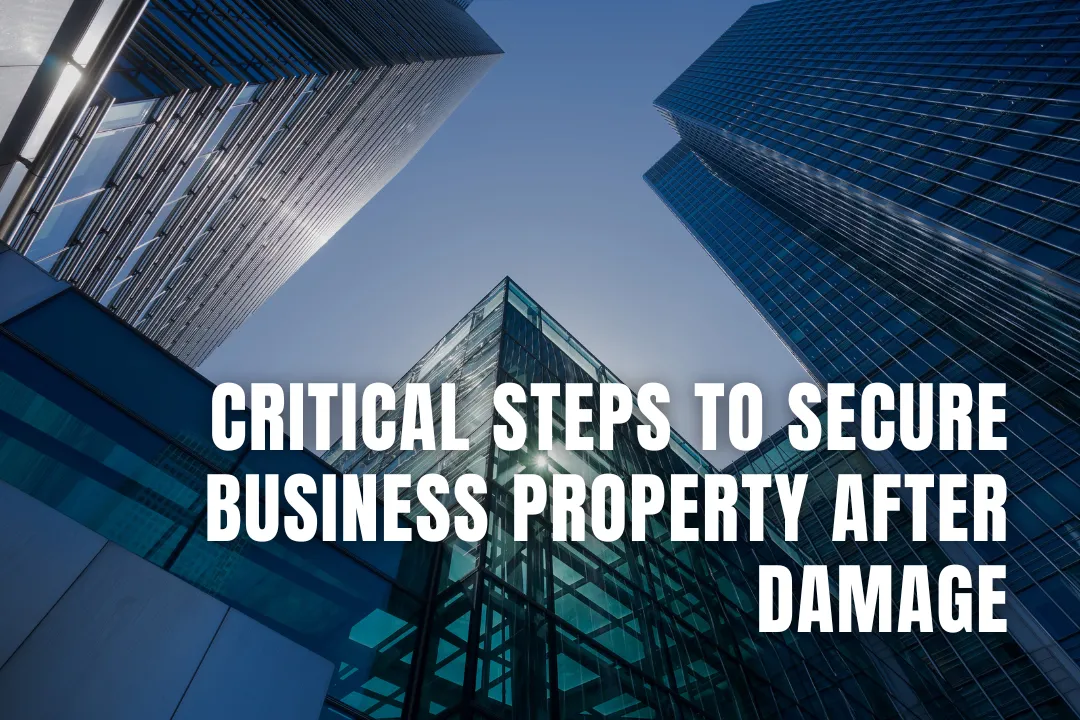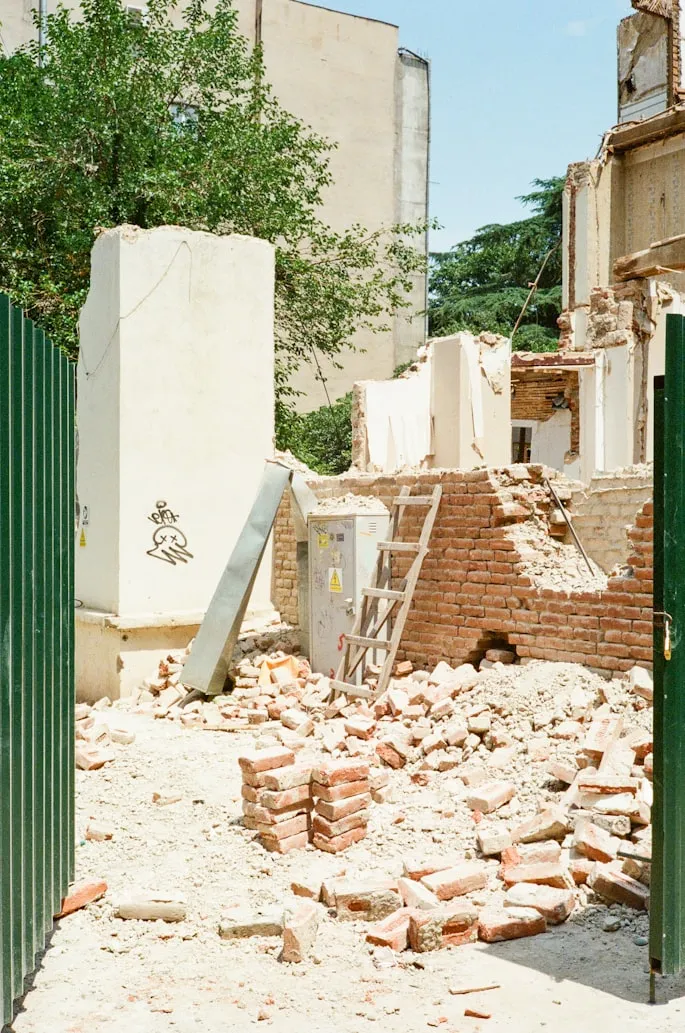
When your business property suffers damage, whether from a natural disaster, fire, burst pipes, or another unforeseen event, your immediate response can greatly impact the outcome of the recovery. Delays, missteps, or inadequate protection can compound the initial loss and lead to safety hazards, prolonged downtime, or even legal complications.
Taking prompt and well-planned action ensures you protect your assets, prevent further deterioration, and lay the groundwork for efficient restoration and business continuity. Each decision made in the hours and days following the incident matters. Here's a step-by-step guide to help property owners secure their commercial buildings after damage and begin recovery on the right foot.

Experienced restoration teams act fast. One of the first things to do after damage is establish contact with your recovery partner for commercial structure restoration. These professionals are trained to evaluate structural risks, stop ongoing threats like water infiltration or smoke contamination, and protect the integrity of your building from further harm.
They’ll install temporary supports, board up exposed entry points, and cover vulnerable roofing or windows with tarps. These early measures prevent additional weather-related damage and deter trespassing or vandalism. Securing permits for emergency work may be required, which professionals can handle swiftly.
Acting independently or waiting too long for inspections may leave the property exposed or make you liable for secondary damage that insurance won't cover. That’s why forming a relationship with a reputable recovery partner in advance, or identifying one quickly, is a critical move in the immediate aftermath of any incident.
Before you or anyone on your team reenters the property, ensure the site is evaluated for safety hazards. Flooding can compromise electrical systems and structural foundations. Fires might leave unstable beams, toxic residues, or weakened floors. Windstorms may result in shattered glass, exposed wiring, or falling debris.
A formal safety assessment by licensed inspectors or your restoration team will identify dangerous areas, structural weaknesses, and other immediate concerns. This isn’t just about legal compliance, it's about preventing injury and setting a solid base for the rest of your recovery process.
Don’t forget to isolate utilities. Gas, electricity, and water should be shut off if there’s any risk of damage. Utility professionals can help verify that reactivation is safe before restoration begins.
Insurance claims rely on accurate, comprehensive documentation. This step should start as soon as the property is deemed safe to enter. Photos, videos, and written notes of all visible damage, from ceilings to flooring, electronics to inventory, should be taken before any cleanup or repair begins.
Include timestamps and detailed descriptions of the damage, as well as any temporary protection measures put in place. Be sure to document equipment, furnishings, signage, inventory, and even HVAC systems, as all may be covered under different parts of your policy.
Well-organized documentation helps avoid disputes with insurance adjusters and can speed up claims approval. Restoration partners often offer assistance in this process to ensure nothing is missed.
Once the property is secured and documented, begin identifying items that can be salvaged. Sensitive materials, like electronics, paper records, or temperature-controlled goods, should be moved quickly to a safe, dry, and secure location.
High-value items may need specialized handling. Your insurance provider may have preferred vendors for asset recovery, including document restoration or data recovery services for damaged servers and hard drives.
Label and inventory everything removed from the site. This will help with insurance tracking and make it easier to resume business once the property is restored. Establishing a chain of custody for expensive or critical items can protect you from theft, loss, or accountability issues.
Restoring the building is only part of the equation, you need a plan to maintain operations, retain customers, and support employees. Depending on the scale of damage, this could mean relocating temporarily, shifting to remote work, or adjusting service delivery methods.
Create communication plans for staff, vendors, and customers. Inform them about changes in operation hours, physical location, or expected downtime. Transparency helps preserve trust during uncertain times.
Digital backups of records, cloud-based systems, and flexible work models make continuity easier to manage during disasters. If you don’t already have these in place, this situation is a reminder to prepare in advance for future events.
Securing the site isn’t the end of the legal journey, restoration and rebuilding must comply with local codes and ordinances. Depending on the nature of the damage and the age of your building, repairs may require full updates to comply with newer safety, energy, or accessibility standards.
Engaging with code enforcement officers early ensures you understand what's required before construction resumes. Restoration partners often have relationships with local municipalities and can expedite this process.

Damage to commercial property is never easy, but fast, informed action can make a powerful difference in the recovery timeline and outcome. By prioritizing safety, documentation, asset protection, and clear planning, business owners can stabilize operations and regain control. With the right restoration team and a proactive mindset, you don’t just recover, you rebuild smarter, stronger, and better prepared for the future.